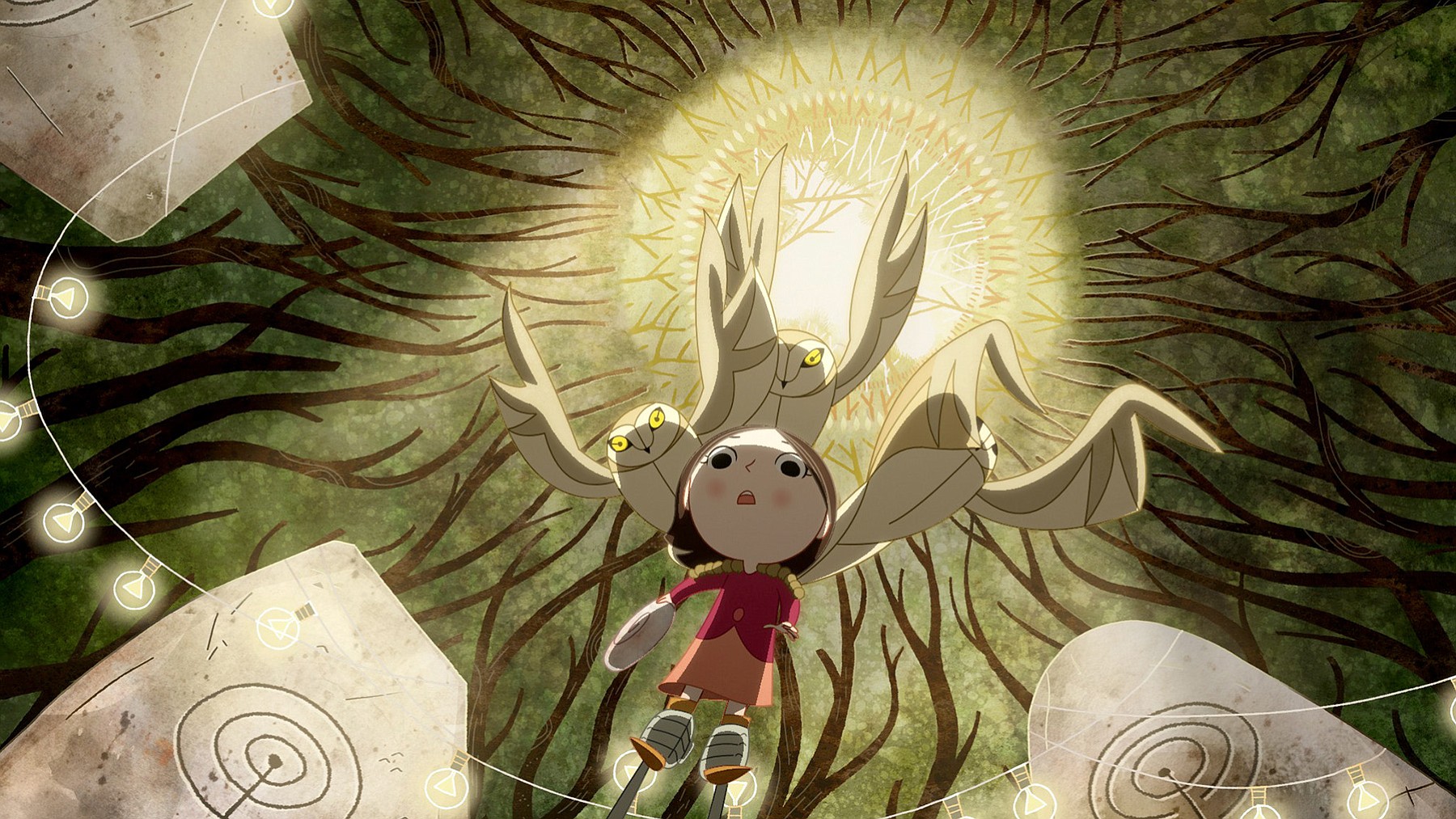‘Song of the Sea” is a wonder to behold. This visually stunning animation masterwork, steeped in Irish myth, folklore and legend, so adroitly mixes the magical and the everyday that to watch it is to be wholly immersed in an enchanted world.
Those who saw director Tomm Moore’s previous film, 2009’s Oscar-nominated “The Secret of Kells,” will hardly be surprised. Like Japan’s transcendent Hayao Miyazaki, Moore has a great gift for diving deeply into his culture and coming back with treasures for all.
Unlike the brashness that often characterizes computer-generated animation, the old-fashioned two-dimensional look of the hand-drawn “Song of the Sea” is simple as well as sophisticated and especially adept at creating a specific sense of place.
Essential are the gorgeous watercolors, created in collaboration with artistic director Adrien Merigeau, that serve as vivid, vibrant backdrops to the animated action, stunning landscapes that alternate between the real and the outlandish.
“Song of the Sea” begins with the myth of the selkie, a creature (also featured in John Sayles’ 1994 “The Secret of Roan Inish”) who manages to be a seal in the ocean but a human on land. That legend and others from Ireland’s great treasure house of tales come to play a major part in the lives of a young brother and sister and their family.
Screenwriter Will Collins, working from an original story by Moore, memorably starts things with a few potent lines read from William Butler Yeats’ “The Stolen Child”: “Come away, O human child! To the waters and the wild with a faery, hand in hand, for the world’s more full of weeping than you can understand.”
Then comes a brief prologue involving Conor (voiced by Brendan Gleeson), a lighthouse keeper who lives on a remote island with his expectant wife, Bronach, his young son, Ben, and Ben’s devoted sheepdog, Cu.
Without warning, Bronach dies in childbirth and we cut to six years later, with Conor still grieving and young Ben (David Rawle) taking his loneliness out by mistreating his young sister, Saoirse (Lucy O’Connell), who has refused to speak a single word since she was born.
But Saoirse, as it turns out, has a connection to other worlds, a link that becomes apparent when she discovers a white garment of her mother’s hidden away in a trunk. She puts it on and is revealed to be a selkie, as at home in the waters as she is on land.
Saoirse’s watery adventures infuriate her father and provide an opening for the children’s bossy Granny (the great Fionnula Flanagan). Believing the island lighthouse is “no place for children,” she takes advantage of her son’s unhappiness to move Ben and Saoirse to the city on the mainland to live with her.
But the spirit world that exists parallel to our own has a great need for Saoirse; it turns out there is a mission only she can complete, though it takes a bit of time for her and us to find out what it is.
In the meantime, a whole flotilla of lively and colorful supernatural folk appear in “Song of the Sea,” including energetic fairies, unpleasant elves, a disconcerting witch called Macha, the legendary storyteller the Great Seanachai and the sea god Mac Lir.
As its title indicates, one of the messages of this emotional film is the power of song to change worlds. So it’s appropriate that “Song of the Sea’s” music, composed by Bruno Coulais in collaboration with the Irish group Kila, is exceptionally melodic and a pure pleasure to listen to.
Filmmaker Moore has also chosen to have his key talent do double duty, voicing both creatures from the spirit universe and people from everyday reality. (Gleeson, for instance, is the Great Seanachai as well as Conor, while Flanagan does both Macha and Granny.)
That choice underlines the connections between worlds, the sense that there can be wonder in ordinary lives, that Ireland’s folklore takes for granted. It’s a beautiful message, and one that’s delivered with heart and graceful visual splendor. The day you choose to see this film is one you won’t forget.



